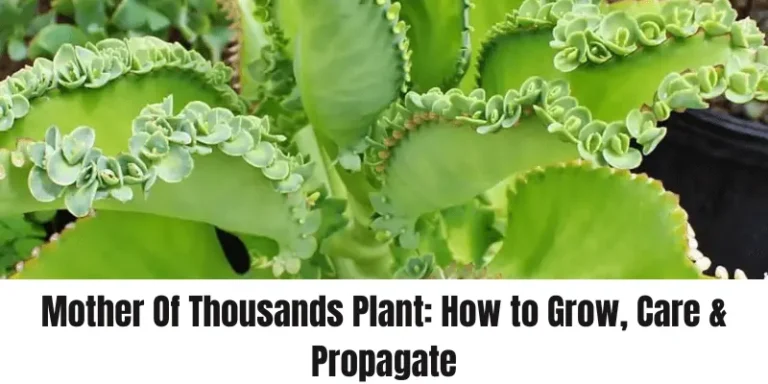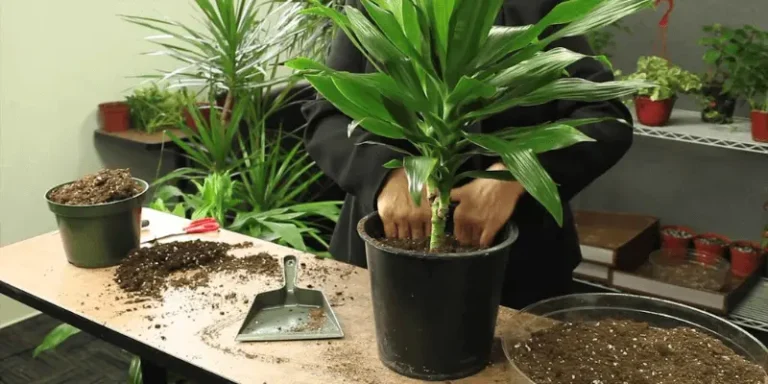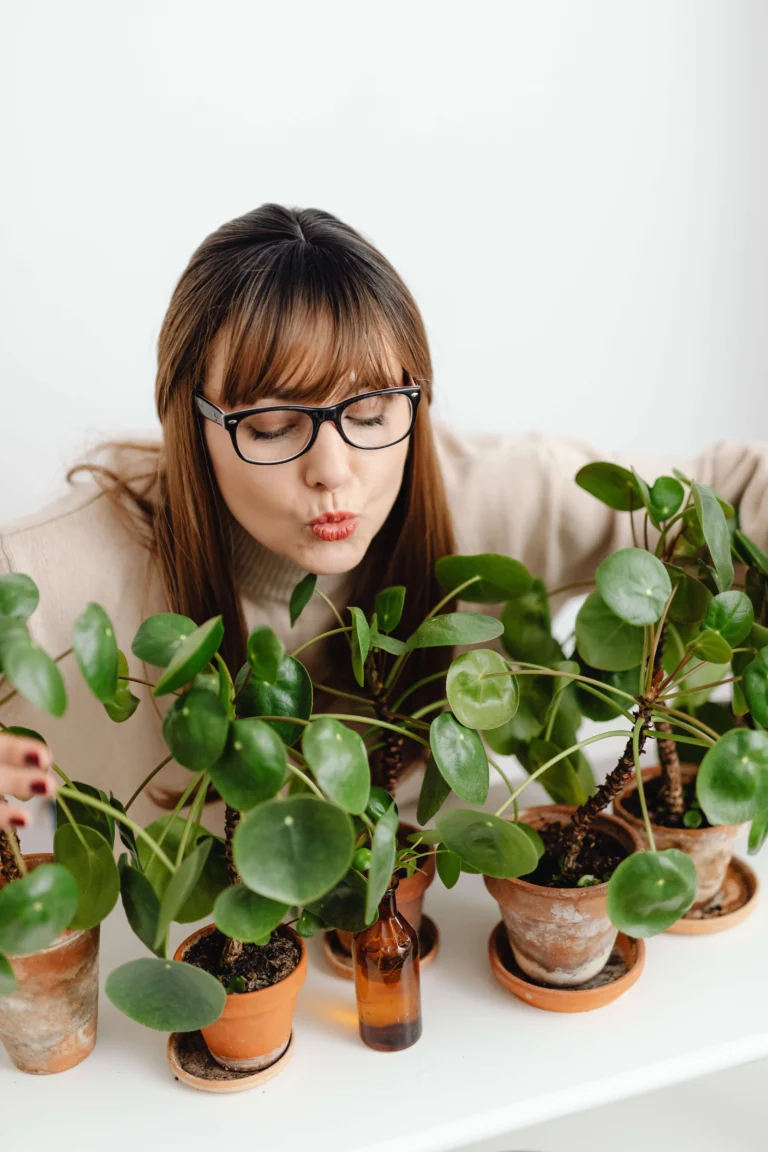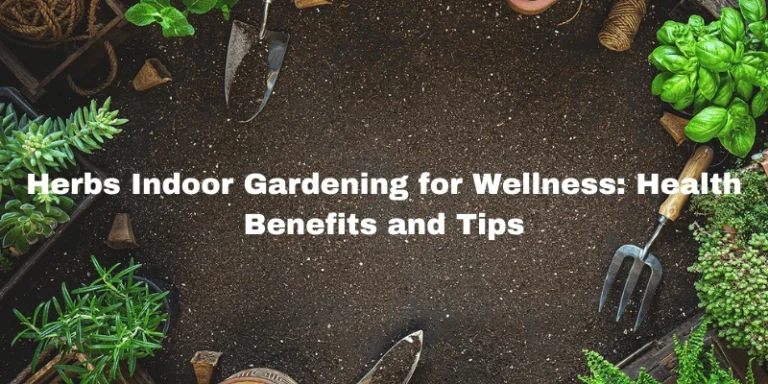Hydrangea Varieties: Best Hydrangea Varieties to Grow Indoor
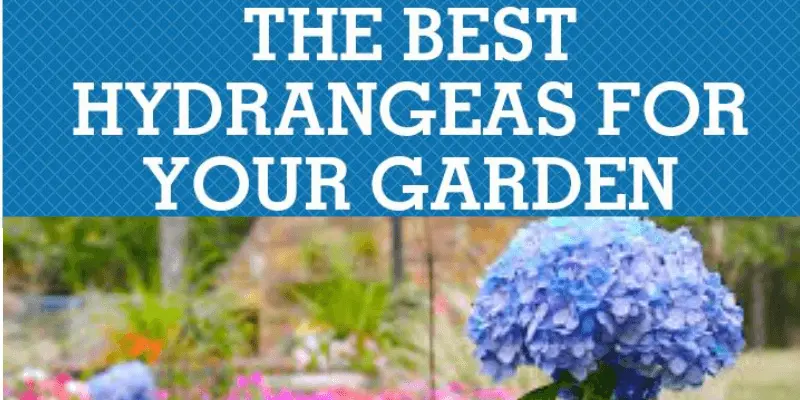
Hydrangeas are known for their striking beauty and unique flowers, making them a desirable choice for indoor gardening. With so many varieties of hydrangea available, each boasting its own unique characteristics and charm, choosing the perfect one for your indoor space can be a joyous journey. Whether you’re a seasoned indoor gardener or just starting your green thumb adventure, these hydrangea varieties are sure to win your heart and turn your indoor sanctuary into a floral paradise. .
Bigleaf Hydrangea (Hydrangea Macrophylla)
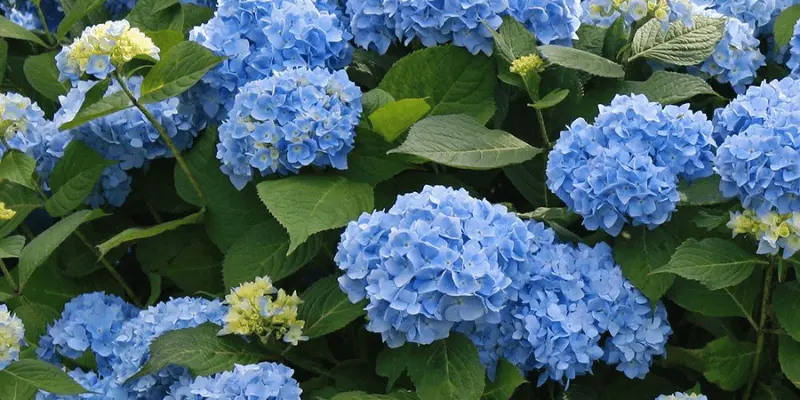
Bigleaf hydrangeas, scientifically known as Hydrangea Macrophylla, are a favorite choice for indoor gardening enthusiasts. These hydrangeas are known for their large, show-stopping flowers that come in a diverse array of colors, including charming shades of blue, pink and purple. One of the distinguishing features of the Bigleaf hydrangea is its unique ability to change flower color based on soil pH levels.
Main Features:
- Colorful blooms: Bigleaf hydrangeas are known for their chameleon-like blooms. When grown in acidic soil with low pH, they produce blue flowers, while in alkaline soil with high pH, they produce pink flowers. This color changing feature allows you to customize the appearance of your hydrangea.
- Partial shade preferred: These hydrangeas thrive in partial shade environments. When growing indoors, place them near a window with filtered sunlight to ensure they get the right amount of light without direct exposure, which can scorch their leaves.
- Constant humidity: Large leaf hydrangeas need constant humidity to maintain their magnificent blooms. Keep the soil evenly moist but not waterlogged, and use well-draining potting soil.
- Seasonal Pruning: Pruning is important for controlling the size and shape of your indoor bigleaf hydrangea. It is best to prune them after flowering, removing spent flowers and any dead or weak stems.
- Container Size: Choose a container with good drainage that is large enough to comfortably accommodate the plant’s root system. This ensures proper air flow to the roots and prevents waterlogging.
Panicle Hydrangea (Hydrangea Paniculata)

Panicle hydrangeas, scientifically known as Hydrangea paniculata, are a delightful choice for indoor gardening, known for their showy and tall flower clusters. These hydrangeas bring a touch of elegance to your indoor space with their unique appearance and changing colors. Let’s take a look at the important features and care tips for Panicle hydrangeas:
Main Features:
Elongated flower clusters: Panicle hydrangeas are notable for their large and conical flower clusters that resemble pyramids. These clusters begin as white flowers and gradually turn pink as they mature, creating a vibrant display of color in your indoor garden.
Sunlight Requirements: Unlike some hydrangea species that prefer partial shade, Panicle hydrangeas thrive in more direct sunlight environments. They are suitable for well-lit indoor spaces, making them a great choice for areas with plenty of natural light.
Low maintenance: Pinnacle hydrangeas are relatively low maintenance compared to other hydrangea varieties. They require little fuss, making them a great option for indoor gardeners who prefer plants that are easy to care for.
Smooth Hydrangea (Hydrangea Arborescens)
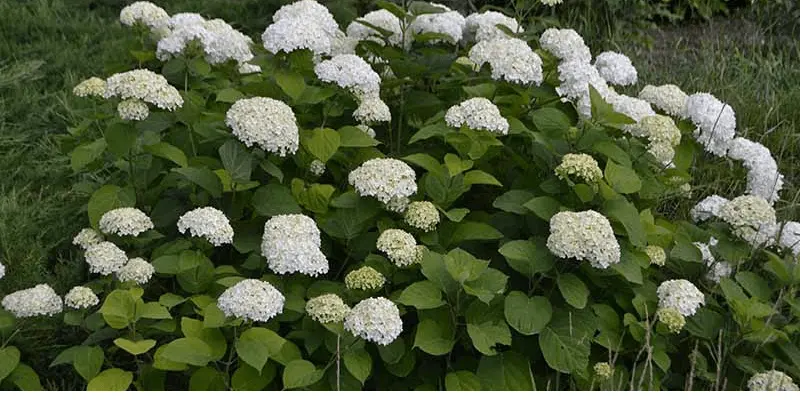
Smooth hydrangeas, scientifically known as Hydrangea arborescens, are an attractive choice for indoor gardening. These hydrangeas are notable for their compact size and their ability to thrive in partially shaded areas, making them a great addition to your indoor environment. Let’s explore the important features and care tips for smooth hydrangeas:
Main Features:
Compact Size: Smooth hydrangeas are relatively small in size, making them well-suited for indoor settings with limited space. Their compact growth habit allows you to enjoy their beauty without overwhelming your living area.
White or greenish-white flowers: These hydrangeas produce beautiful white or greenish-white flowers, which add a beautiful and calming touch to your interior decor. Their flowers are simple but attractive.
Partial shade preference: Smooth hydrangeas thrive in partially shaded environments. When growing them indoors, place them where they can receive filtered sunlight or indirect light.
Oakleaf Hydrangea (Hydrangea Quercifolia)
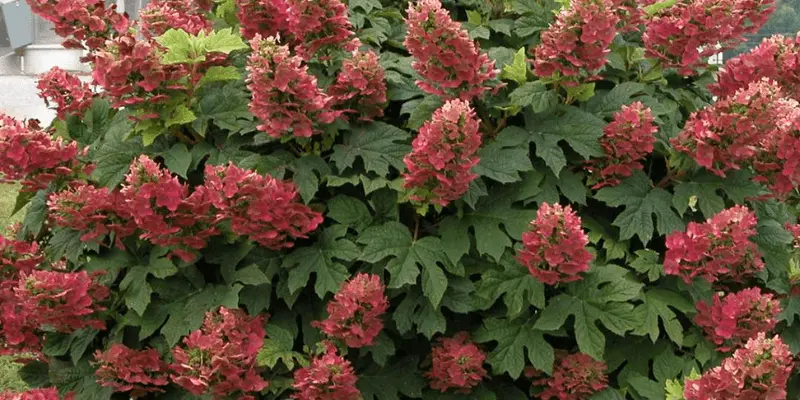
Oakleaf hydrangeas, scientifically known as Hydrangea quercifolia, is a unique and sophisticated choice for indoor gardening. These hydrangeas stand out with their distinctive oak-shaped leaves and cone-shaped clusters of white flowers. Oakleaf hydrangeas add an element of beauty and elegance to your interior decor. Let’s consider the main characteristics and care tips of oakleaf hydrangeas:
Main Features:
Typical Plants: Oakleaf hydrangeas are named for their leaves, which resemble the leaves of an oak tree. These large, lobed leaves add texture and interest to your indoor garden, even when the plant is not in bloom.
Cone-shaped clusters: Oakleaf hydrangeas’ flowers are arranged in cone-shaped clusters, providing a visually striking display. These clusters start out as white flowers and can turn pink with age.
Partial shade preference: Oakleaf hydrangeas thrive in partial shade areas. When growing them indoors, place them in areas where they can receive filtered sunlight or indirect light. Avoid direct sun exposure to avoid leaf scorch.
Climbing Hydrangea (Hydrangea Anomala)
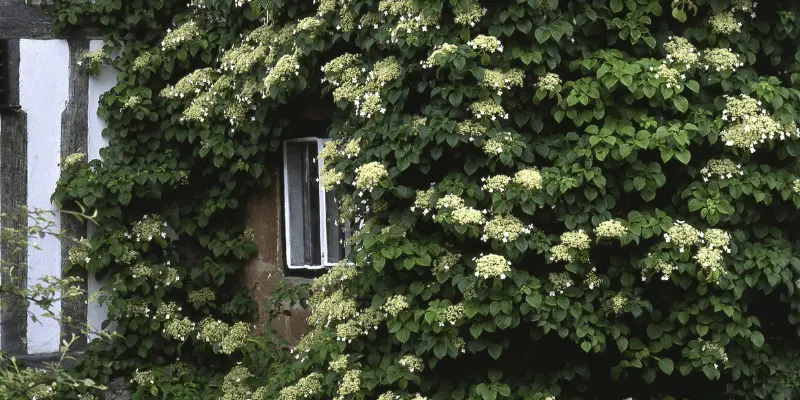
Climbing hydrangeas, scientifically known as Hydrangea anomala, are an attractive choice for indoor gardening, especially if you want to introduce a vertical element to your living space. These hydrangeas are known for their lush foliage and clusters of fragrant white flowers, creating a dazzling effect that adds romance and charm to your interior decor. Let’s explore the important features and care tips for climbing hydrangeas:
Main Features:
Vertical Growth: Climbing hydrangeas are known for their ability to climb and attach themselves to various surfaces such as walls, trellises or arbors. This unique growth habit allows you to create a vertical garden indoors.
Heart-Shaped Leaves: These hydrangeas boast heart-shaped leaves that add an element of natural beauty even when the plant is not in bloom. Lush foliage provides a backdrop for their stunning clusters of white flowers.
Fragrant Flowers: Climbing hydrangeas produce clusters of fragrant white flowers, which not only look beautiful but also fill your indoor space with a floral fragrance.
Mountain Hydrangea (Hydrangea serrata)
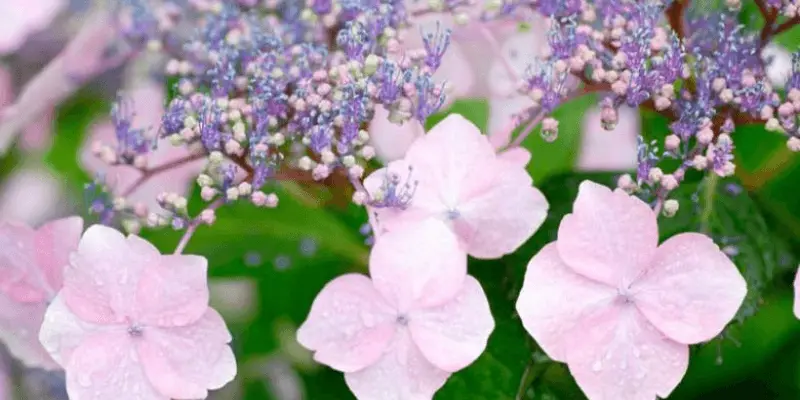
Mountain hydrangeas, scientifically known as Hydrangea serrata, are a beautiful and compact hydrangea variety that grows well indoors. These hydrangeas are prized for their delicate lace cap or mophead blooms, which bring a touch of elegance and natural beauty to your interior decor. Let’s take a look at the important features and care tips of Mountain Hydrangeas:
Main Features:
Compact Size: Mountain hydrangeas are smaller in size than some other types of hydrangea, making them ideal for indoor settings with limited space. Their compact growth habit allows them to fit comfortably on windowsills or small tables.
Lace Cap or Mop Head Blooms: Mountain hydrangeas produce spectacular lace cap or mop head blooms, depending on the cultivar. Lace-cap varieties have a central cluster of fertile flowers surrounded by delicate, flat, petal-like blooms, while mophead varieties display clusters of large, spherical flowers. Both types of flowers are visually stunning.
Partial shade preference: Like many types of hydrangea, mountain hydrangeas thrive in partially shaded environments. When growing indoors, place them where they can receive filtered sunlight or indirect light.
PeeGee Hydrangea (Hydrangea Paniculata ‘Grandiflora’)
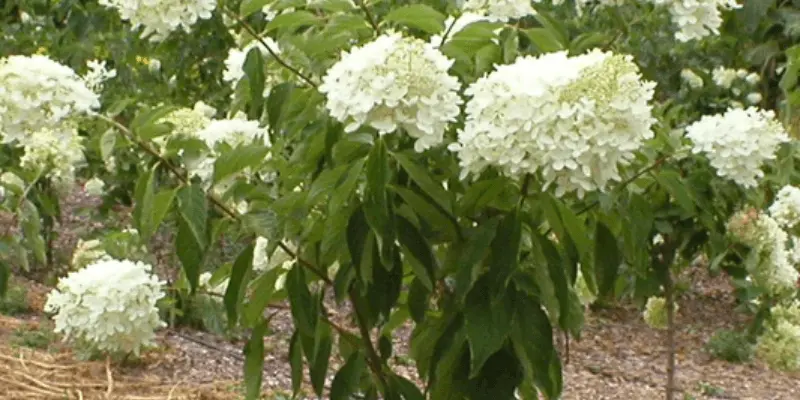
PeeGee hydrangeas, scientifically known as Hydrangea Paniculata ‘Grandiflora’, are a delightful and wonderful choice for indoor gardening. These hydrangeas are distinguished by their large and pyramid-shaped flower clusters, making them a wonderful addition to your interior decor. Let’s explore the key features and care tips for PeeGee hydrangeas:
Main Features:
Pyramid-shaped clusters: PeeGee hydrangeas are characterized by their large and pyramid-shaped flower clusters, which can reach impressive sizes. These clusters begin as white flowers and gradually turn pink as they mature, providing a vibrant and visually appealing display.
Sun-loving: Unlike some hydrangea varieties that thrive in partial shade, PeeGee hydrangeas prefer more direct sunlight. They are suitable for well-lit interior spaces, making them a great choice for areas with plenty of natural light.
Long Bloom Season: PeeGee hydrangeas are known for their long bloom season, allowing you to enjoy their beautiful blooms for a long period of time. This extended display makes them a favorite among indoor gardeners.
Lacecap Hydrangea (Hydrangea Macrophylla Normalis)
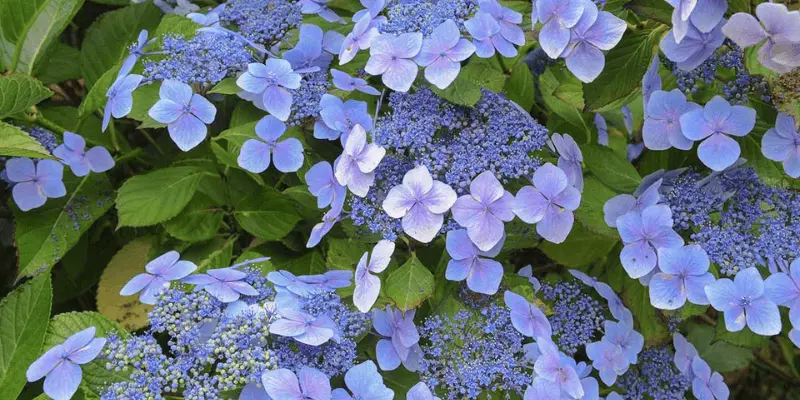
Lacecap hydrangeas, scientifically known as Hydrangea macrophylla normalis, are a visually stunning and unique hydrangea variety that thrives when grown indoors. These hydrangeas are distinguished by their flat-topped, lace-like flower heads, making them a wonderful addition to your interior decor. Let’s explore the important features and care tips for Lacecap hydrangeas:
Main Features:
Lace-like flower heads: Lace-cap hydrangeas are characterized by their delicate and flat-topped flower heads that resemble lace doilies. These flower heads consist of a central cluster of small, fertile flowers surrounded by large, petal-like sterile flowers, creating an attractive and complex appearance.
Color Variety: Lacecap hydrangeas come in a variety of colors, including shades of blue, pink, purple, and white. Flower color can be affected by the pH level of the soil, allowing you to customize the appearance of your hydrangea.
Partial shade preference: Like many types of hydrangea, lace cap hydrangeas thrive in partially shaded environments. When grown indoors, place them in locations where they can receive filtered sunlight or indirect light.
Mophead Hydrangea (Hydrangea Macrophylla)
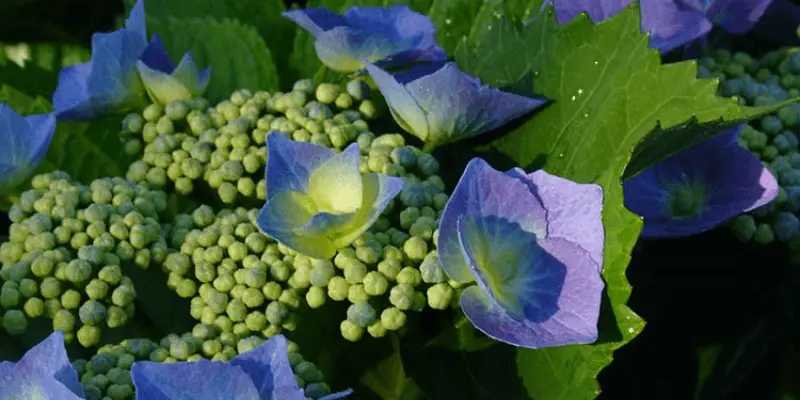
Mophead hydrangeas, scientifically known as Hydrangea macrophylla, are a classic and beloved choice for indoor gardening. These hydrangeas are known for their large, globe-shaped flower clusters that come in a variety of stunning colors, adding beauty and charm to your interior decor. Let’s go over the important features and care tips for Mophead hydrangeas:
Main Features:
Large, globe-like blooms: Mophead hydrangeas are characterized by their show-stopping, spherical flower clusters that can be quite large. These flowers make a dramatic and visually appealing display, making them a popular choice among indoor gardeners.
Variety of colors: One of the distinguishing features of mophead hydrangeas is the wide range of colors that their blooms can display. These colors include shades of blue, pink, purple and even white. Flower color can be affected by soil pH levels, which can improve their appearance.
Partial shade preference: Mophead hydrangeas thrive in partial shade. When grown indoors, place them in locations where they can receive filtered sunlight or indirect light. Protect the leaves from harsh, direct sunlight to prevent scorching.
Endless Summer Hydrangea (Hydrangea Macrophylla ‘Endless Summer’)
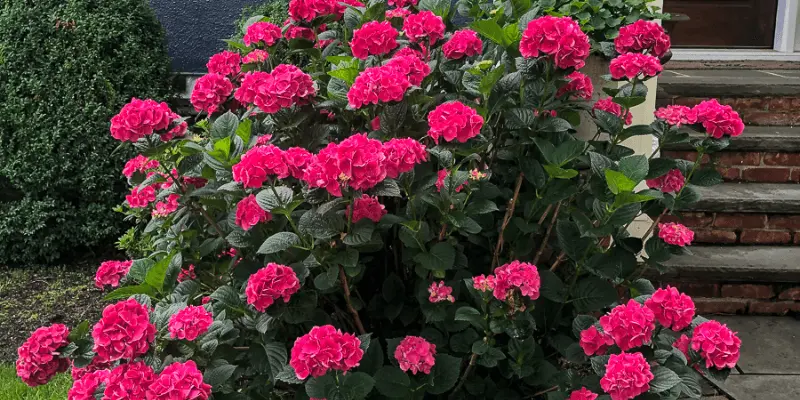
Endless Summer hydrangeas, scientifically known as Hydrangea macrophylla ‘Endless Summer’, are a remarkable and versatile choice for indoor gardening. These hydrangeas are celebrated for their unique ability to bloom repeatedly throughout the growing season, providing a continuous display of beautiful blooms indoors. Let’s explore the key features and care tips for Endless Summer hydrangeas:
Main Features:
Continuous Bloom: As the name suggests, endless summer hydrangeas are known for their ability to bloom continuously from late spring to early fall. This extended bloom period ensures that your indoor garden is adorned with their magnificent blooms for a long period of time.
Color variation: Endless summer hydrangeas exhibit an interesting color-changing characteristic. Early blooms are often pink, but may turn blue in acidic soils or remain pink in alkaline soils. This color change adds an element of surprise to your indoor garden.
Partial shade preference: Like many types of hydrangea, endless summer hydrangeas thrive in partially shaded environments. When grown indoors, place them in locations where they can receive filtered sunlight or indirect light. Protect them from harsh, direct sunlight.
PeeWee Hydrangea (Hydrangea Macrophylla ‘PeeWee’)
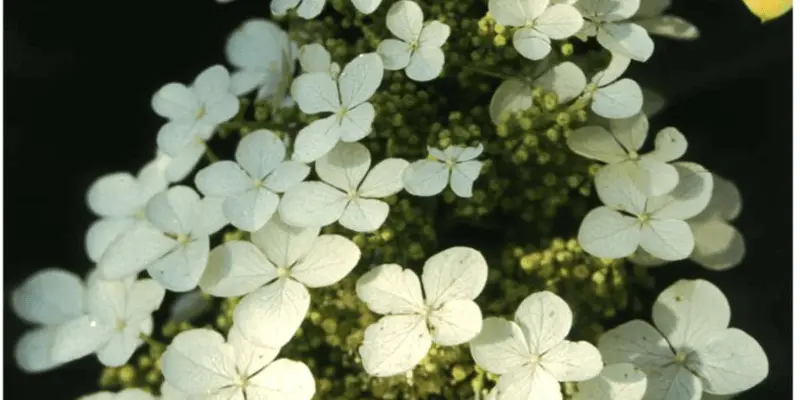
PeeWee hydrangeas, scientifically known as Hydrangea macrophylla ‘PeeWee’, are a pleasant and compact choice for indoor gardening. These petite hydrangeas are prized for their small size and stunning spherical flower clusters, making them a perfect addition to your interior decor. Let’s explore the important features and care tips for PeeWee hydrangeas:
Main Features:
Compact Size: PeeWee hydrangeas are significantly smaller in size than other hydrangea varieties. Their low growth habit makes them an ideal choice for indoor settings with limited space, such as windowsills or tabletops.
Spherical Flower Clusters: These hydrangeas produce attractive spherical flower clusters that add color and beauty to your indoor garden. Their flowers are available in a variety of colors, including blue, pink and purple.
Partial shade preference: PeeWee hydrangeas, like many types of hydrangea, thrive in partial shade. When growing them indoors, place them where they can receive filtered sunlight or indirect light. Protect the leaves from harsh, direct sunlight to prevent scorching.
Teller Hydrangea (Hydrangea Macrophylla ‘Teller’)
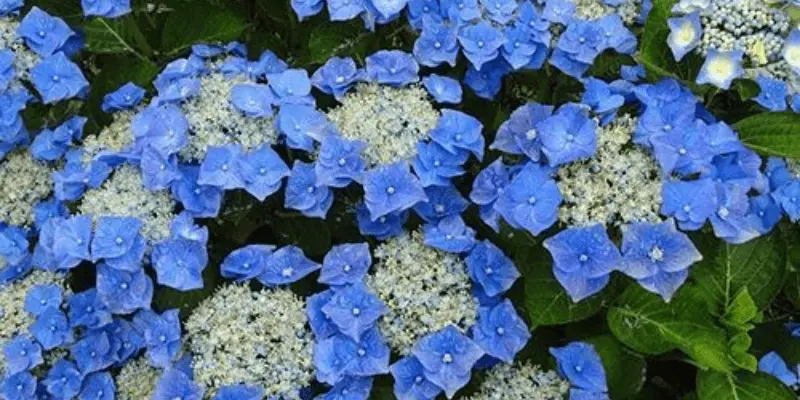
Teller hydrangeas, scientifically known as Hydrangea macrophylla ‘Teller’, are a unique and attractive choice for indoor gardening. These hydrangeas are celebrated for their distinctive lace-cap flower clusters and vibrant color, making them a beautiful addition to your interior decor. Let’s explore the important features and care tips for Teller hydrangeas:
Main Features:
Lace-Cap Flower Clusters: Taylor hydrangeas are distinguished by their lace-cap flower clusters, characterized by a center of small fertile flowers surrounded by large, petal-like sterile flowers. This arrangement creates a complex and visually stunning display.
Color Variation: These hydrangeas are known for their ability to change color based on soil pH. In acidic soils, they may produce blue or purple flowers, while alkaline soils result in pink or reddish flowers. This color changing feature allows for customization of their appearance.
Partial shade preference: Like many types of hydrangea, Taylor hydrangeas thrive in partially shaded environments. When growing indoors, place them where they can receive filtered sunlight or indirect light. Protect them from harsh, direct sunlight to prevent leaf damage
Fireworks Hydrangea (Hydrangea Macrophylla ‘Hanabi’)
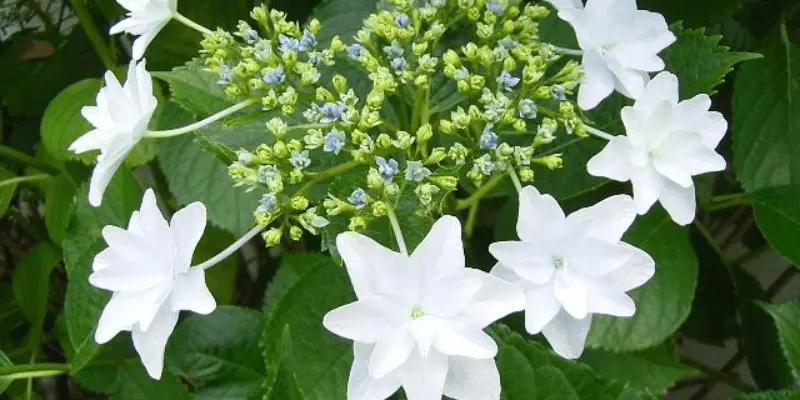
Fireworks hydrangeas, scientifically known as Hydrangea macrophylla ‘Hanbi’, are a wonderful and unique choice for indoor gardening. These hydrangeas are celebrated for their vibrant and multicolored flowers that resemble exploding fireworks, adding excitement to your interior decor. Let’s explore the important features and care tips for Fireworks hydrangeas:
Main Features:
Explosive Flowers: Fireworks hydrangeas get their name from their explosive-looking flower heads. Their flowers are a riot of colors, with petals showing shades of pink, purple, blue and white. This stunning display makes them stand out in any interior setting.
Color-Changing Magic: Like other hydrangea varieties, Fireworks hydrangeas exhibit the fascinating ability to change flower colors based on soil pH. Acidic soils produce blue or purple hues, while alkaline soils result in pink or reddish hues, allowing for a dynamic and ever-changing appearance.
Partial shade preference: Like many types of hydrangea, Fireworks hydrangeas thrive in partially shaded environments. When growing them indoors, place them where they can receive filtered sunlight or indirect light. Protect them from direct sun exposure to prevent leaf damage.
Vanilla Strawberry Hydrangea (Hydrangea Paniculata ‘Renhy’)
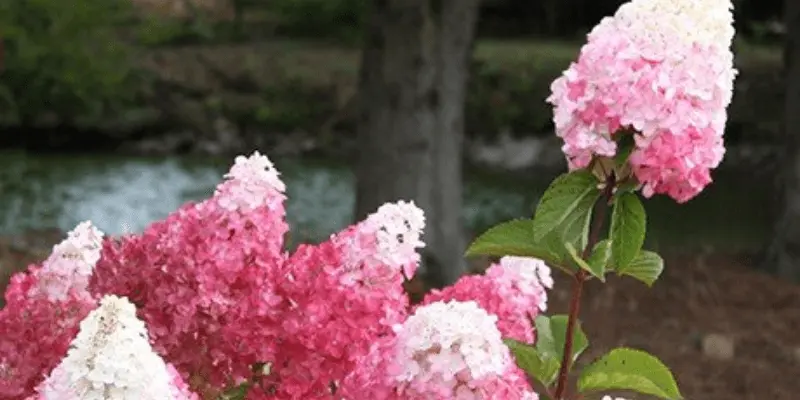
Vanilla strawberry hydrangeas, scientifically known as Hydrangea punculata ‘Renhee’, are a delightful and visually stunning choice for indoor gardening. These hydrangeas are known for their conical flower clusters that transition through shades of vanilla, pink and deep red, resembling a delicious ice cream treat. Let’s explore the main characteristics and care tips of vanilla strawberry hydrangeas:
Main Features:
Unique Flower Cones: Vanilla Strawberry hydrangeas are characterized by their distinctive conical flower clusters. These clusters begin with creamy white flowers, gradually transition to a soft strawberry pink, and eventually darken to a rich, velvety red as they mature, creating a stunning multicolored effect.
Long Bloom Season: These hydrangeas offer a long bloom season, adorning your indoor garden with their luscious blooms from mid-summer to fall, ensuring a long display of beauty. Is.
Partial Sun Preference: Vanilla strawberry hydrangeas thrive in areas with partial sun exposure. When growing them indoors, place them near a window with filtered sunlight or indirect light. Protect the leaves from harsh, direct sunlight to prevent scorching.


